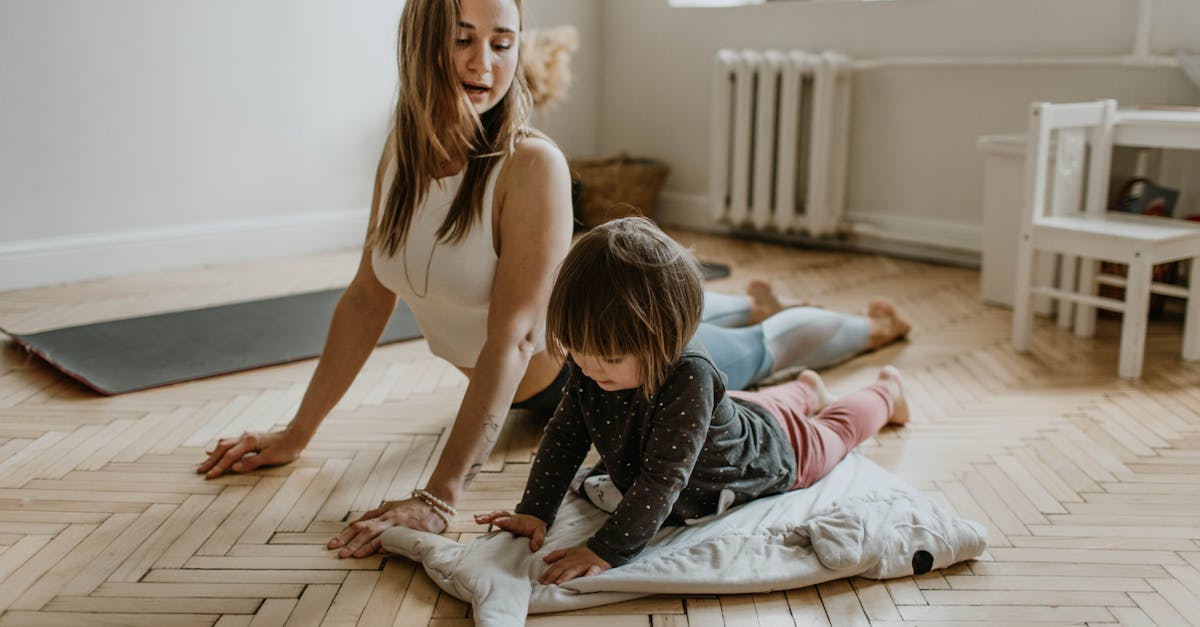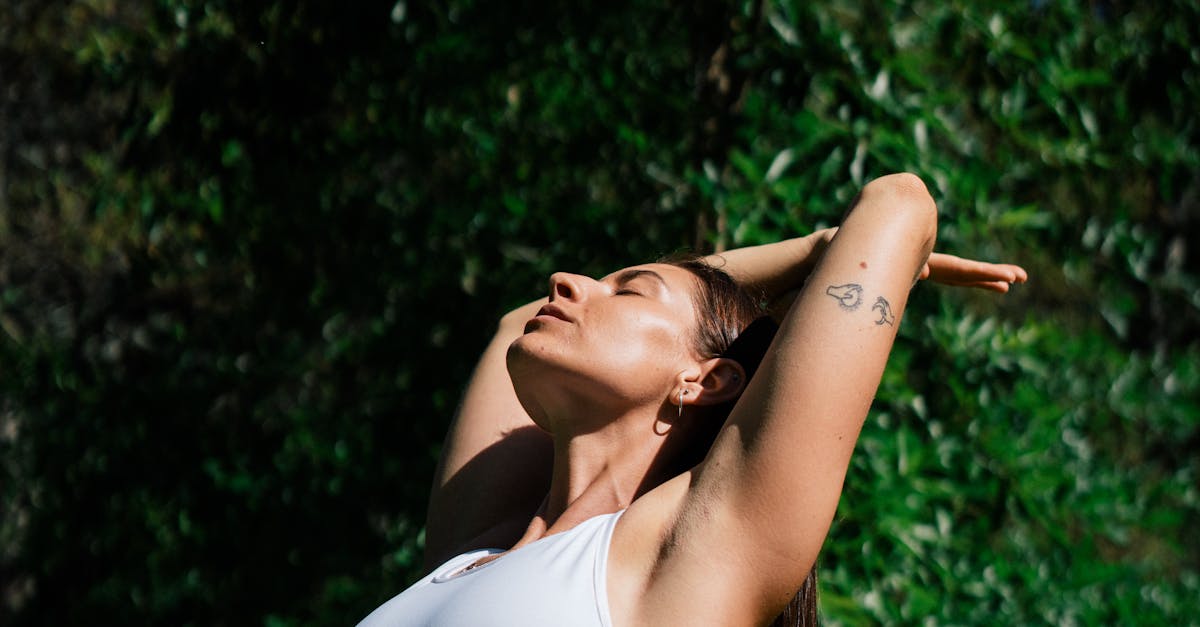Stretches for Tight Quads and Hip Flexors: Techniques for Comprehensive Flexibility
Unlocking Flexibility: A Comprehensive Guide to Quad and Hip Flexor Stretches

In today’s fast-paced world, maintaining flexibility in our bodies is crucial for overall well-being. Tight quadriceps and hip flexor muscles can lead to various ailments, including pain, mobility issues, and poor posture. This comprehensive guide will provide you with effective stretches to target these muscle groups, promoting flexibility and maximizing your physical comfort.
As we delve into the importance of quad and hip flexor flexibility, we’ll uncover the benefits of regular stretching. Discover how these exercises can alleviate pain, enhance your range of motion, and improve your posture. By understanding the dynamics of these muscle groups, you’ll gain a deeper appreciation for the significance of maintaining their flexibility.
Before embarking on our stretching journey, let’s explore the different techniques involved. We’ll differentiate between dynamic and static stretching, explaining when and how to incorporate each method into your routine. With a clear understanding of these techniques, you’ll be well-equipped to maximize the benefits of your stretching practice.
1. Understanding the Importance of Quad and Hip Flexor Flexibility
Understanding the Importance of Quad and Hip Flexor Flexibility
Maintaining flexibility in your quadriceps and hip flexor muscles is essential for overall physical well-being. These muscle groups play a crucial role in various movements, including walking, running, and squatting. When these muscles are tight, it can lead to pain, reduced mobility, and poor posture. Stretching these muscle groups regularly can provide numerous benefits, including:
- Reduced pain: Tight quadriceps and hip flexors can put stress on your joints, leading to pain in your knees, hips, and lower back. Stretching these muscles can help to relieve pain and improve your range of motion.
- Enhanced mobility: Tight quadriceps and hip flexors can restrict your range of motion, making it difficult to perform everyday activities. Stretching these muscles can help to improve your mobility and make it easier to move around.
- Improved posture: Tight quadriceps and hip flexors can pull your pelvis out of alignment, leading to poor posture. Stretching these muscles can help to improve your posture and reduce your risk of developing back pain and other musculoskeletal problems.
Incorporating regular stretching into your routine is essential for maintaining flexibility in your quadriceps and hip flexors. By taking the time to stretch these muscles, you can improve your overall physical health and well-being.
2. Dynamic vs. Static Stretching Techniques

Dynamic vs. Static Stretching Techniques
Stretching is an essential part of any fitness routine, and there are two main types of stretches: dynamic and static. Dynamic stretches are active stretches that involve movement, while static stretches are passive stretches that are held for a period of time.
Dynamic stretches are typically used as a warm-up before exercise. They help to prepare your muscles for activity by increasing your heart rate and blood flow, and by loosening up your joints. Some examples of dynamic stretches include leg swings, arm circles, and torso twists.
Static stretches are typically used after exercise to improve flexibility. They involve holding a stretch for a period of time, typically 10-30 seconds. Some examples of static stretches include the standing quad stretch, the kneeling hip flexor stretch, and the hamstring stretch.
Both dynamic and static stretches are important for maintaining flexibility and preventing injuries. Dynamic stretches are best used as a warm-up before exercise, while static stretches are best used after exercise. By incorporating both types of stretches into your routine, you can improve your overall flexibility and reduce your risk of injuries.
3. Effective Quad Stretches
Effective Quad Stretches
The quadriceps are a group of four muscles located on the front of the thigh. They are responsible for extending the knee and flexing the hip. Tight quadriceps can lead to pain in the knees, hips, and lower back. They can also contribute to poor posture and reduced mobility.
There are a number of effective stretches that can help to loosen tight quadriceps. Two of the most common and effective quad stretches are the standing quad stretch and the kneeling hip flexor stretch.
Standing quad stretch:
- Stand with your feet hip-width apart.
- Bend your right knee and grab your right foot with your right hand.
- Pull your heel towards your buttocks until you feel a stretch in your right quadriceps.
- Hold the stretch for 10-30 seconds.
- Repeat with your left leg.
Kneeling hip flexor stretch:
- Kneel on your right knee, with your left foot flat on the floor in front of you.
- Place your hands on your left thigh, just above your knee.
- Lean forward and push your hips forward until you feel a stretch in your right hip flexor.
- Hold the stretch for 10-30 seconds.
- Repeat with your left leg.
Standing Quad Stretch
Standing Quad Stretch: Step-by-Step Guide
The standing quad stretch is a simple yet effective stretch that targets the rectus femoris muscle, which is located on the front of the thigh. This stretch can help to relieve pain and tightness in the quads, and can also improve flexibility and range of motion in the hip and knee joints.
Step-by-step instructions:
- Stand with your feet hip-width apart.
- Bend your right knee and grab your right foot with your right hand.
- Pull your heel towards your buttocks until you feel a stretch in your right quadriceps.
- Hold the stretch for 10-30 seconds.
- Repeat with your left leg.
Tips:
- To increase the intensity of the stretch, you can pull your heel closer to your buttocks.
- To decrease the intensity of the stretch, you can keep your heel further away from your buttocks.
- You can also perform this stretch with a strap or towel. To do this, loop the strap or towel around the arch of your foot and hold onto the ends of the strap or towel with your hands. This can help you to pull your heel closer to your buttocks.
Benefits:
- Relieves pain and tightness in the quads
- Improves flexibility and range of motion in the hip and knee joints
- Helps to prevent injuries
- Improves posture
Kneeling Hip Flexor Stretch
Kneeling Hip Flexor Stretch: Instructions and Benefits
The kneeling hip flexor stretch is a great way to loosen up the iliopsoas muscle, which is located on the front of the hip. This stretch can help to relieve pain and tightness in the hip flexors, and can also improve flexibility and range of motion in the hip and knee joints.
Step-by-step instructions:
- Kneel on your right knee, with your left foot flat on the floor in front of you.
- Place your hands on your left thigh, just above your knee.
- Lean forward and push your hips forward until you feel a stretch in your right hip flexor.
- Hold the stretch for 10-30 seconds.
- Repeat with your left leg.
Tips:
- To increase the intensity of the stretch, you can lean forward further.
- To decrease the intensity of the stretch, you can keep your hips back more.
- You can also perform this stretch with a strap or towel. To do this, loop the strap or towel around the arch of your foot and hold onto the ends of the strap or towel with your hands. This can help you to lean forward further.
Benefits:
- Relieves pain and tightness in the hip flexors
- Improves flexibility and range of motion in the hip and knee joints
- Helps to prevent injuries
- Improves posture
4. Essential Hip Flexor Stretches

Essential Hip Flexor Stretches
Hip flexor tightness is a common problem that can lead to pain, reduced mobility, and poor posture. There are a number of effective stretches that can help to loosen tight hip flexors, including the runner’s lunge and the couch stretch.
Runner’s lunge:
- Start in a lunge position with your right foot forward and your left knee on the ground.
- Keep your right heel on the ground and lean forward until you feel a stretch in your right hip flexor.
- Hold the stretch for 10-30 seconds.
- Repeat with your left leg.
Couch stretch:
- Sit on the edge of a couch or chair with your feet flat on the floor.
- Lean forward and place your hands on the floor in front of you.
- Walk your hands forward until you feel a stretch in your hip flexors.
- Hold the stretch for 10-30 seconds.
These are just two of many effective hip flexor stretches. It is important to find stretches that work for you and to incorporate them into your regular routine. Stretching regularly can help to improve your flexibility, reduce pain, and prevent injuries.
Runner’s Lunge
Runner’s Lunge: Step-by-Step Instructions
The runner’s lunge is a great way to stretch the iliopsoas and rectus femoris muscles, which are located on the front of the hip and thigh. This stretch can help to relieve pain and tightness in the hip flexors, and can also improve flexibility and range of motion in the hip and knee joints.
Step-by-step instructions:
- Start in a lunge position with your right foot forward and your left knee on the ground.
- Keep your right heel on the ground and lean forward until you feel a stretch in your right hip flexor.
- Hold the stretch for 10-30 seconds.
- Repeat with your left leg.
Tips:
- To increase the intensity of the stretch, you can lean forward further.
- To decrease the intensity of the stretch, you can keep your hips back more.
- You can also perform this stretch with a strap or towel. To do this, loop the strap or towel around the arch of your back foot and hold onto the ends of the strap or towel with your hands. This can help you to lean forward further.
Benefits:
- Relieves pain and tightness in the hip flexors
- Improves flexibility and range of motion in the hip and knee joints
- Helps to prevent injuries
- Improves posture
Couch Stretch
Couch Stretch: Detailed Guide and Benefits
The couch stretch is a great way to stretch the hip flexor muscles, which are located on the front of the hip. This stretch can help to relieve pain and tightness in the hip flexors, and can also improve flexibility and range of motion in the hip and knee joints.
Step-by-step instructions:
- Sit on the edge of a couch or chair with your feet flat on the floor.
- Lean forward and place your hands on the floor in front of you.
- Walk your hands forward until you feel a stretch in your hip flexors.
- Hold the stretch for 10-30 seconds.
Tips:
- To increase the intensity of the stretch, you can walk your hands further forward.
- To decrease the intensity of the stretch, you can keep your hands closer to your body.
- You can also perform this stretch with a strap or towel. To do this, loop the strap or towel around the arch of your foot and hold onto the ends of the strap or towel with your hands. This can help you to walk your hands further forward.
Benefits:
- Relieves pain and tightness in the hip flexors
- Improves flexibility and range of motion in the hip and knee joints
- Helps to prevent injuries
- Improves posture
5. Tips for Safe and Effective Stretching
Tips for Safe and Effective Stretching
Stretching is an important part of any fitness routine, but it is important to do it safely and effectively to avoid injuries. Here are a few tips:
- Breathe: Breathe deeply and regularly throughout your stretches. Holding your breath can restrict your range of motion and lead to dizziness.
- Hold each stretch for 10-30 seconds: Holding a stretch for less than 10 seconds will not give your muscles enough time to relax and lengthen. Holding a stretch for more than 30 seconds can put too much stress on your muscles and joints.
- Warm up before stretching: Warming up your muscles before stretching will help to prevent injuries. You can warm up by doing some light cardio, such as walking or jogging, or by doing some dynamic stretches, such as arm circles or leg swings.
- Listen to your body: If you feel pain during a stretch, stop and consult with a healthcare professional. Pushing through pain can lead to injuries.
By following these tips, you can help to ensure that you are stretching safely and effectively.
Breathing and Relaxation
Breathing and Relaxation: Importance for Stretching
When stretching, it is important to focus on your breathing and to maintain a relaxed body. This will help you to get the most out of your stretches and to avoid injuries.
Breathing
- Breathe deeply and regularly throughout your stretches. Holding your breath can restrict your range of motion and lead to dizziness.
- Inhale as you prepare to stretch, and exhale as you move into the stretch.
- Continue to breathe deeply and regularly throughout the stretch.
Relaxation
- Relax your body as you stretch. Do not try to force yourself into a stretch.
- If you feel pain, stop the stretch and consult with a healthcare professional.
- Maintaining a relaxed body will help you to stretch more deeply and effectively.
By following these tips, you can help to ensure that you are stretching safely and effectively.
Appropriate Holding Time
Appropriate Holding Time for Stretches
The optimal holding time for a stretch varies depending on your individual flexibility and the type of stretch you are doing. However, a good general rule is to hold each stretch for 10-30 seconds.
Holding time for different types of stretches
- Static stretches: Static stretches are held for a period of time without movement. The optimal holding time for a static stretch is 10-30 seconds.
- Dynamic stretches: Dynamic stretches involve movement. The optimal holding time for a dynamic stretch is 5-10 seconds.
- Ballistic stretches: Ballistic stretches involve bouncing or swinging movements. Ballistic stretches are not recommended as they can lead to injuries.
How to determine the right holding time for you
The best way to determine the right holding time for you is to listen to your body. If you feel pain, stop the stretch. You should also stop the stretch if you feel any numbness or tingling.
It is important to avoid holding stretches for too long, as this can lead to excessive strain and injuries. If you are new to stretching, start with holding each stretch for 10 seconds and gradually increase the holding time as you become more flexible.
By following these tips, you can help to ensure that you are stretching safely and effectively.
Warming Up Before Stretching
Warming Up Before Stretching: Benefits and How-To
Warming up before stretching is an important step that can help to prevent injuries and improve your flexibility. When you warm up, you increase the blood flow to your muscles, which makes them more pliable and less likely to tear. Warming up also helps to prepare your body for the movements that you will be doing during your stretching routine.
There are a number of different ways to warm up before stretching. Some simple warm-up exercises include:
- Walking
- Jogging
- Jumping jacks
- Arm circles
- Leg swings
You can also warm up by doing some light cardio, such as using an elliptical machine or riding a stationary bike.
It is important to warm up for 5-10 minutes before stretching. This will give your body enough time to increase its blood flow and prepare for the stretching exercises.
By warming up before stretching, you can help to prevent injuries and improve your flexibility. So next time you stretch, be sure to warm up first.
Quiz
- Which of the following is a benefit of stretching?
(a) Reduced pain (b) Enhanced mobility (c) Improved posture (d) All of the above
- What is the difference between dynamic and static stretching?
(a) Dynamic stretches involve movement, while static stretches are held for a period of time without movement. (b) Static stretches involve movement, while dynamic stretches are held for a period of time without movement. (c) There is no difference between dynamic and static stretching. (d) Dynamic stretching is better than static stretching.
- What is the optimal holding time for a static stretch?
(a) 5-10 seconds (b) 10-30 seconds (c) 30-60 seconds (d) As long as possible
- Why is it important to warm up before stretching?
(a) To prevent injuries (b) To improve flexibility (c) To prepare the muscles for stretching (d) All of the above
- (d)
- (a)
- (b)
- (d)
